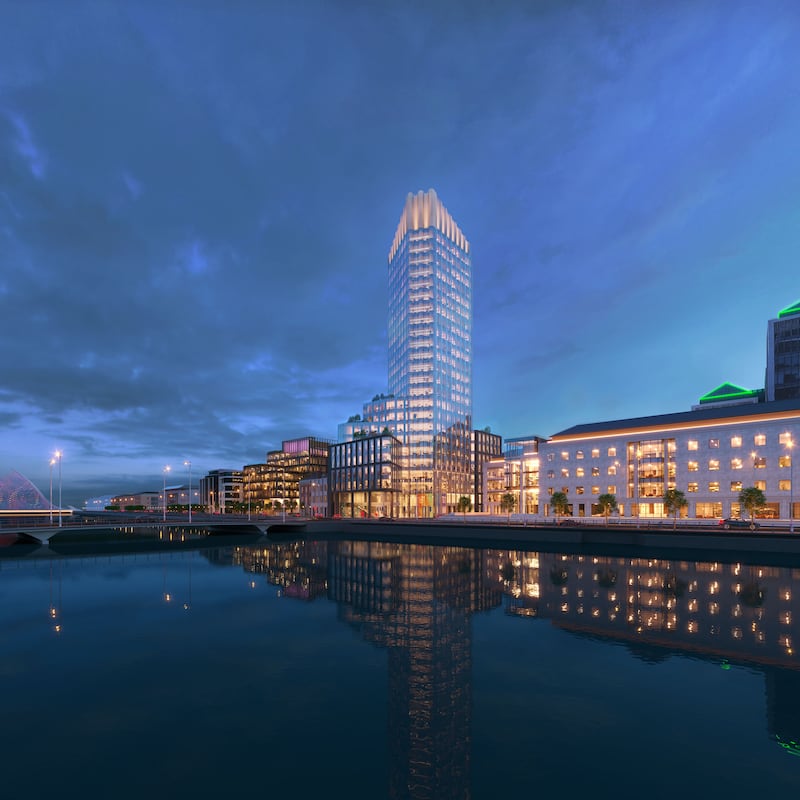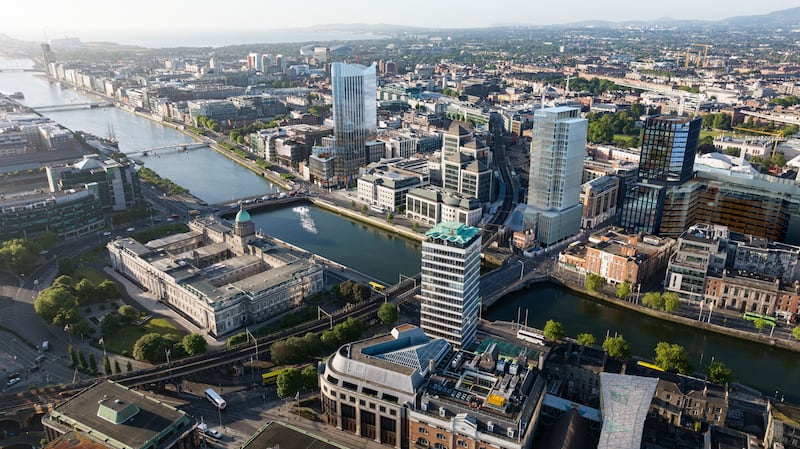The developer behind a bid to build Dublin’s tallest building on the site of the former City Arts Centre site at City Quay is contesting the decision by Dublin City Council to refuse planning permission for the project.
Ventaway, a company headed up by David Kennan and Winthrop engineering group founder Barry English, has lodged an appeal with An Bord Pleanála against the council’s rejection last month of its application to develop a 24-storey (108m/354.33ft) structure on the site, which has lain dormant for nearly two decades.
The proposed scheme is office-led with 22,587sq m of office space over 23 of its floors, along with 1,404sq m of artist studios and exhibition space distributed across the front of the building at its lower-ground, ground and first-floor levels. The former City Arts Centre’s original neon sign has been salvaged by the developer and would be used at the entrance to the new building.

In refusing permission for the scheme, Dublin City Council’s planners said it would be “likely to have noticeable and detrimental overbearing and overshadowing impacts” on neighbouring properties due to its “overwhelming scale, mass and height”.
RM Block
The planners also said it would “seriously detract from the setting and character of the Custom House and environs”, and have “a significant and detrimental visual impact on the river Liffey Conservation Area and important views and vistas, including those views from the Custom House environs, Amiens Street, Mountjoy Square, Gardiner Street Lower, Trinity College campus and views westward from the river Liffey”.
Addressing those concerns, Ventaway says in its submission to An Bord Pleanála that its proposal for the site should be considered on the basis of the benefits its development would bring to the city.

Referring specifically to the building’s proposed height, the developer says the river Liffey “provides a favourable context for taller buildings given that it is a wide-open space corridor and its banks are a key mobility corridor within the city”. This, it says, is “consistent” with the Urban Development and Building Guidelines which allow for additional height in developments to be considered along the edge of large open spaces and thoroughfares such as the Liffey corridor.
Commenting on the planners’ contention that the City Arts Centre scheme would detract from the Custom House, Ventaway says it is at “the centre of a particularly diverse character area, in which there is no uniformity in development era, building typology, form, scale or architecture”.
They add: “Many of the developments were forerunners and strong architectural expressions of their type and time, for example the Custom House itself, Busáras, Liberty Hall, IFSC, George’s Quay Plaza, AquaVetro and College Square. The proposed development is a natural progression and could take its place comfortably (albeit prominently) in this character area.”




















